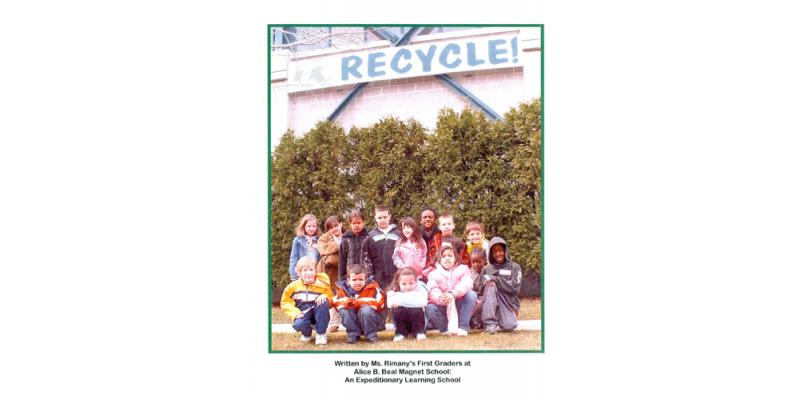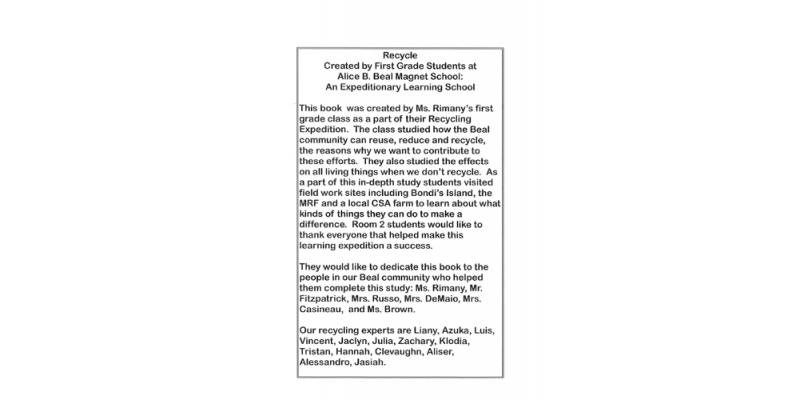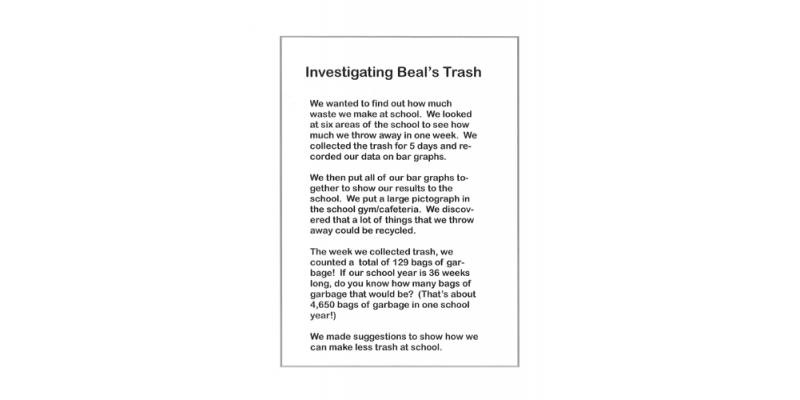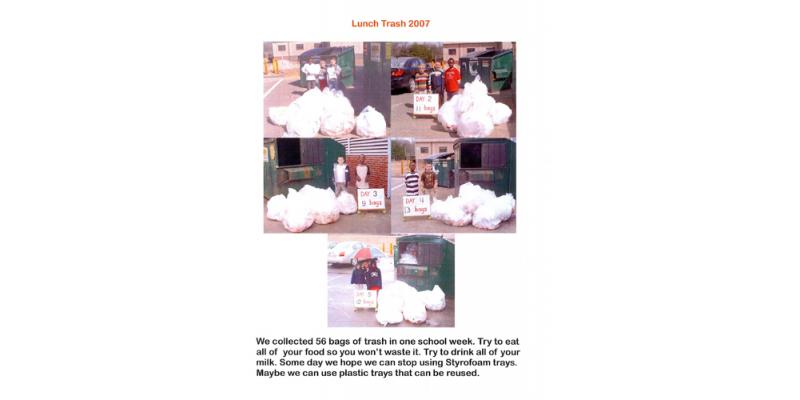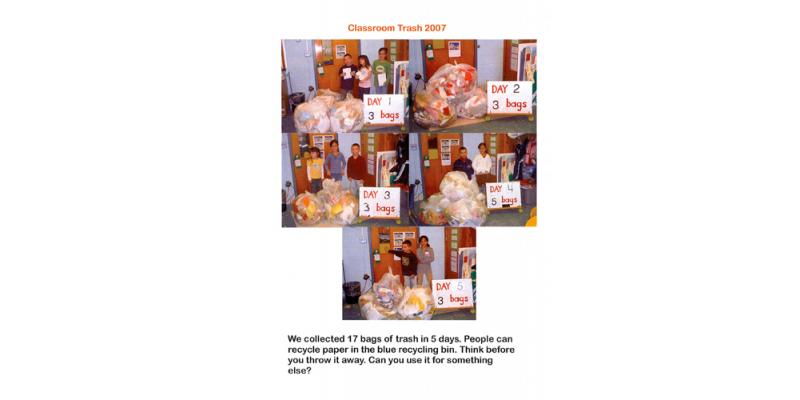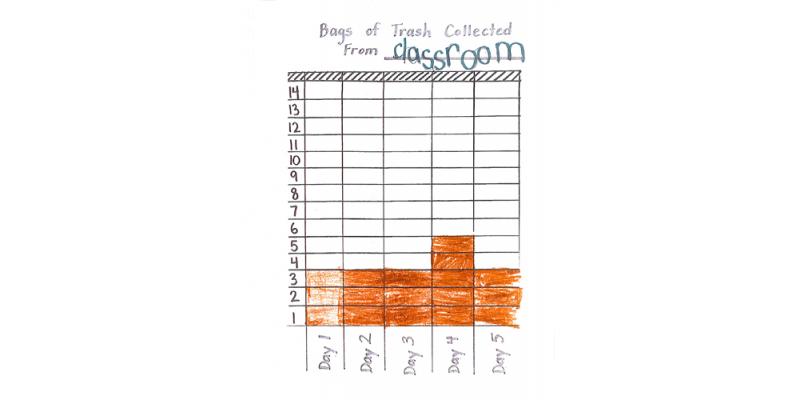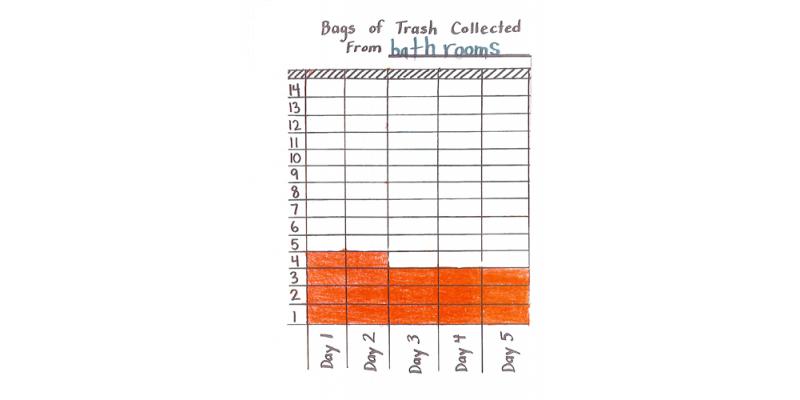Recycling
School: Alice B. Beal Elementary
City/State: Springfield, MA
Grade(s): 1
Format(s): Report: Science
Subject(s): English Language Arts, Mathematics, Science and Technology
Project Overview
This book was created by 1st graders at the Alice B. Beal Magnet School in Springfield, Massachusetts, as part of a learning expedition on recycling and sustainability.
Throughout the expedition, students did fieldwork and worked with outside experts at a number of sites including city recycling and water processing facilities and a community farm to learn about composting.
As part of their study, students investigated the quantity of garbage that the school produced. Students collected and analyzed data to find out what the patterns of trash generation were in classrooms and other parts of the school.
These young students produced graphs of their results and shared them both in this book and by creating large charts that were displayed in the cafeteria so the whole school could visualize the results and make adjustments to their habits. Students also creatively used digital photography as a way to capture their data and their process.
Students used math extensively throughout this project. For example, they found that 129 bags of garbage were produced each week. They then calculated how many bags that would mean for the year. In the end, students made suggestions to the school about how to decrease the amount of trash they as a community produced.
How This Project Can Be Useful
- Shows an authentic, hands-on research project for young students.
- This is a replicable project – one that many schools have decided to do after seeing this project – both with this age group and with older students thereby increasing the sophistication of the data collection and analysis.
- Highlights an example of a product that can make an immediate impact.
- Useful for illuminating how much trash a school accumulates over time – easy to not know the overall impact an individual makes within the scope of the whole community.
- Combination of photos and graphs are a nice way to convey both the information collected and to document these students’ process.
- Student learning is nicely captured in the simple writing that accompanies that displays of data. For example, students reporting on the trash collected from the cafeteria, “Try to drink all of your milk. Some day we hope we can stop using Styrofoam trays.”
- An introduction nicely orients the reader to the purpose of the project.
Common Core State Standards
| Standard | Long Term Learning Target |
|---|---|
| RI.1.7 |
|
| W.1.6 |
|
| W.1.7 |
|
| SL.1.5 |
|
